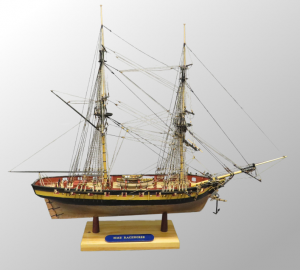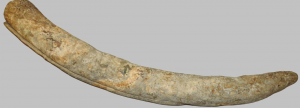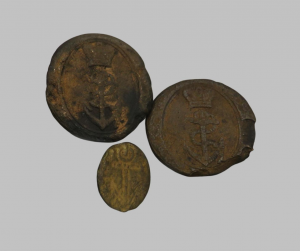HMS Racehorse
The 200th anniversary of the loss of HMS Racehorse on 14th December 2022 saw a number of local groups collaborating to share the story and significance. The tragic events surrounding the loss are thought to have been a catalyst for Manx resident Sir William Hillary to galvanise his efforts to persuade the UK Government to start a national maritime lifesaving organisation. His petitions were successful, and in March 1824 what was later to become the RNLI was formed in London.
The Racehorse, under the command of Captain William B Suckling, was ordered from the Plymouth station to the Isle of Man, as convoy for the naval cutter Vigilant, Lieutenant Read, which had been badly damaged on Conister Rock on Sunday 6th October 1822 and was obliged to cut away her mast and throw her guns overboard; she was with much difficulty taken into Douglas harbour. After undergoing a temporary repair she was to proceed to Plymouth in company with the Racehorse.
The Racehorse left Milford Haven early on the morning of Saturday 14th December 1822, bound for Douglas. She made the Calf Lights at 5.00 p.m., with another light being distinguished shortly afterwards, which the pilot concluded to be that on Douglas pier head.
Captain Suckling gave orders to haul inward and reef the topsails, with the brig’s head offshore, but before the command could be executed, she struck upon a rock, which they would later find out was adjacent to the Skerranes, at Langness Point. It was dark and cloudy, the sea running high in a fresh south-westerly wind and she was thrown violently against the rocks.
Guns of distress with rockets, false fires, and other signals were made to attract assistance from the shore but there was no response. Captain Suckling ordered the cutter, under the command of Lieutenant Mallock, and full of men, to reach shore to seek assistance.
Difficulty was experienced in getting the cutter out and every effort used to get the stream anchor into it, in order to carry it out, but the breakers rendered the idea impracticable. It was at this moment that the commander and officers became certain that the Racehorse was badly holed and would not survive. Local fishing boats from Castletown came to the aid of the crew.
Unfortunately eight men, three of them local, were drowned. The five crewmen from the Racehorse who were drowned were: John Grundy; Thomas Mein Bone; Charles Caggett; James White; and William Stewart. The three local men who drowned were Norris Bridson, Thomas Hall and Robert Quayle. William Millett, boy, had been drowned earlier while attempting to get into one of the boats.
After the wreck site of HMS Racehorse was relocated in the 1960s, a number of artefacts were brought to the surface and kindly donated to the Manx National Collections by the Isle of Man Sub Aqua Club. Copper sheathing from the bottom of the ship has been preserved, along with parts of guns and ammunition – objects naturally associated with a Royal Navy ship. But the ship was also home for her crew whilst at sea and there are personal possessions such as buttons and shoes. An exhibition was held in Castletown over the anniversary itself, and as a longer term legacy, all of the artefacts raised from the seabed and donated are now available to view through iMuseum. In addition to this, a 3D scan of the wreck site courtesy of Isle of Man Sub Aqua Club and Dr Jon Chamberlain, University of Essex, is also available to view here: http://bit.ly/3knkkhQ
One of the objects now available on iMuseum is this elephant tusk. It’s a complete but cracked ivory tusk, one of a pair recovered from the site. Perhaps a souvenir from a crew members previous voyage.
Another interesting find from the wreckage of HMS Racehorse are these three buttons. Two have a similar design of a fouled anchor under a crown and rope crossing the right anchor fluke with reverse crown “superfine orange” and “W.P U?” printed on them. They are possibly from post-1812 commander/ lieutenant uniforms. The other button is of a plain anchor.
To see the full range of objects from our HMS Racehorse collection, click here: http://bit.ly/3iKkCi6
And whilst you’re at it, why not take a look at HMS Racehorse on the Isle of Man Historic Environment Record, available to view through this link: https://bit.ly/3WnpgAm
Katie Clugston
Digital Collections Assistant
Katie.Clugston@mnh.im
Blog Archive
- Edward VII’s Coronation Day in the Isle of Man (9 August 1902)
- Victoria’s Coronation Day in the Isle of Man (28 June 1838)
- Second World War Internment Museum Collections
- First World War Internment Museum Collections
- Rushen Camp: Second World War Internment on the Isle of Man
- Hutchinson, Onchan & Peveril Camps: Second World War Internment on the Isle of Man
- Douglas Promenade: Second World War Internment on the Isle of Man
- Mooragh Camp: Second World War Internment on the Isle of Man
- Sculpture collection newly released to iMuseum
- Fishing Folklore: how to stay safe & how to be lucky at sea
- News from the gaol registers project: remembering the men and women who served time in Castle Rushen
- Explore Mann at War: stories of Manx men, women and children in conflict
- We Will Remember Them: Isle of Man Great War Roll of Honour (1914-1918)
- Dr Dave Burnett explores Manx National Heritage geology collection
- Unlocking stories from the Archives: The Transvaal Manx Association
- Login to newspapers online: step-by-step guidance
- ‘Round Mounds’ Investigation Reveals Rare Bronze Age Object



